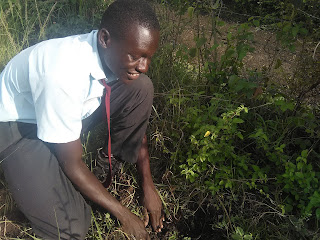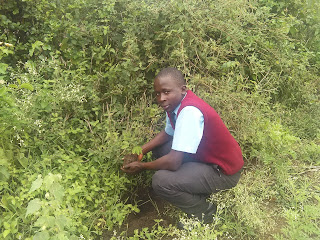Farmers who embrace organic farming can seek
creative ways of controlling pests and diseases in order to successfully put
together a productive kitchen garden. Together with well aerated soil and the
right amount of compost, disease and pest control is a vital part of organic
farming. To achieve this, farmers can use plants with a pungent smell to keep
away the pests.
One of the common plants
that a farmer can use is the
onion, the leaves can be planted around the vegetables in a ring formation as
they act as repellant to insects causing
diseases. Alternatively, mint or pyrethrum can be used for the same purpose.
Organic pesticide from plants like chives and Mexican
marigold whose leaves once boiled excretes
a juice with a bitter taste that
keeps insects away. The farmer can prepare the pesticide by taking the leaves
and cutting them into small pieces, boiling them for about half an hour and once the mixture has cooled
add a bar soap to the mixture and create foam. The soap would make the leaves
sticky once the solution is sprayed on vegetables which would then trap
insects. Planting the plant around the garden will also keep the pests away due to
irritating smell.
Tree planting around the garden can also help in controlling
the pests since trees acts habitat for birds and therefore the birds living in
the trees will eat pests like caterpillar hence protecting the
farm from pest attacks.
Tobacco can be applied in keeping off
destructive pests like armyworms from the farm. When tobacco
powder are put in maize stalks, it suffocates the armyworms
since the worms breathe through their spores.
In addition, farmers
should also plant tithonia hedge around the farm that could be used in making
compost since it has a lot of nitrogen. The farmer should also pant leguminous
plants as part of crop rotation to improve the soil.





































